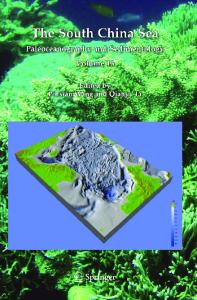Revisiting the seasonal wave height variability in the South China Sea with merged satellite altimetry observations
- PDF / 6,724,716 Bytes
- 13 Pages / 595 x 842 pts (A4) Page_size
- 114 Downloads / 371 Views
Revisiting the seasonal wave height variability in the South China Sea with merged satellite altimetry observations SU Hui1, WEI Chunlei2, JIANG Shaocai2, LI Peiliang3, ZHAI Fangguo3* 1 Central Marine Environmental Monitoring Station of Xiamen, East China Sea Branch, State Oceanic Administration,
Xiamen 361008, China 2 Beihai Marine Environmental Monitoring Center, South China Sea Branch, State Oceanic Administration, Beihai
536007, China 3 College of Oceanic and Atmospheric Sciences, Ocean University of China, Qingdao 266100, China
Received 22 March 2016; accepted 25 August 2016 ©The Chinese Society of Oceanography and Springer-Verlag Berlin Heidelberg 2017
Abstract
The seasonal variability of the significant wave height (SWH) in the South China Sea (SCS) is investigated using the most up-to-date gridded daily altimeter data for the period of September 2009 to August 2015. The results indicate that the SWH shows a uniform seasonal variation in the whole SCS, with its maxima occurring in December/January and minima in May. Throughout the year, the SWH in the SCS is the largest around Luzon Strait (LS) and then gradually decreases southward across the basin. The surface wind speed has a similar seasonal variation, but with different spatial distributions in most months of the year. Further analysis indicates that the observed SWH variations are dominated by swell. The wind sea height, however, is much smaller. It is the the largest in two regions southwest of Taiwan Island and southeast of Vietnam Coast during the northeasterly monsoon, while the largest in the central/southern SCS during the southwesterly monsoon. The extreme wave condition also experiences a significant seasonal variation. In most regions of the northern and central SCS, the maxima of the 99th percentile SWH that are larger than the SWH theoretically calculated with the wind speed for the fully developed seas mainly appear in August–November, closely related to strong tropical cyclone activities. Compared with previous studies, it is also implied that the wave climate in the Pacific Ocean plays an important role in the wave climate variations in the SCS. Key words: significant wave height, seasonal variability, South China Sea, satellite observations Citation: Su Hui, Wei Chunlei, Jiang Shaocai, Li Peiliang, Zhai Fangguo. 2017. Revisiting the seasonal wave height variability in the South China Sea with merged satellite altimetry observations. Acta Oceanologica Sinica, 36(11): 38–50, doi: 10.1007/s13131-017-1073-4
1 Introduction The South China Sea (SCS) is the largest semi-enclosed sea in the western tropical Pacific Ocean, and has a large northeastsouthwest oriented abyssal basin (e.g., Liu et al., 2008). It is crucial to elucidate changes in the wave climate of the SCS in the design and operation of offshore industries, the selection of ship routing, the assessment of the wave energy, and the risk assessment of the future vulnerability to possible coastal disasters. In the literature, the wave climate in the SCS has attracted many attention
Data Loading...











